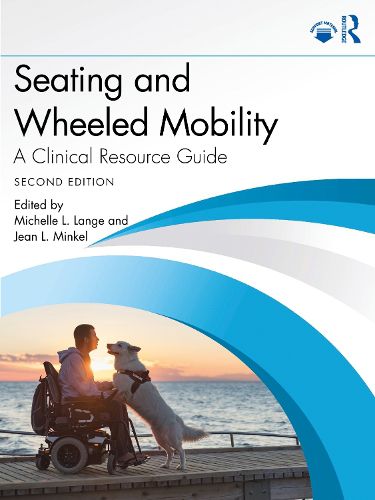Readings Newsletter
Become a Readings Member to make your shopping experience even easier.
Sign in or sign up for free!
You’re not far away from qualifying for FREE standard shipping within Australia
You’ve qualified for FREE standard shipping within Australia
The cart is loading…






Fully updated and expanded in its second edition, Seating and Wheeled Mobility: A Clinical Resource Guide presents clinical assessment considerations when working with a person with a mobility disability.
The book provides a wide spectrum of information, from foundational information for those practitioners who are new to the field, to in-depth, population-specific information for practitioners who perhaps have not worked with a particular population in the past.
The book is divided into sections, each section addressing a different area of clinical practice in wheelchair seating and mobility.
The first section is an in-depth presentation of the assessment process and pressure management. The range of available seating supports is presented as part of the product selection process, including matching the person's needs with available technology. The second section focuses on 24-hour postural care. Three types of sitters are presented: hands-free, hands-dependent, and prop sitters. Included is the most current method to measure and describe the seated person and related support surfaces needed when recommending a device.
The third section lays the foundation for clinical decision making around the selection and fit of the most appropriate wheeled mobility device - manual/power wheelchair or scooter.
The fourth section provides in-depth clinical applications for each mobility category. On-time mobility for the very young, power seating, and mobility skills training are addressed.
The fifth section provides population specific clinical application of position, pressure management, and mobility for the pediatric, geriatric, and bariatric populations, as well as persons with both degenerative and complex neuromuscular impairments.
The sixth section presents additional considerations when working with persons who are aging with a disability, considerations of the environment of use, safe transport of a wheelchair, and the application of wheelchair standards in the clinic.
Finally, measuring outcomes throughout the service provision process and a look at the past, present, and future of complex rehab technology is included.
Richly illustrated throughout, this book has been carefully designed to support occupational and physical therapists, suppliers/distributors, and funders/payers who are interested in wheelchair seating and mobility assessment and applications.
$9.00 standard shipping within Australia
FREE standard shipping within Australia for orders over $100.00
Express & International shipping calculated at checkout
Fully updated and expanded in its second edition, Seating and Wheeled Mobility: A Clinical Resource Guide presents clinical assessment considerations when working with a person with a mobility disability.
The book provides a wide spectrum of information, from foundational information for those practitioners who are new to the field, to in-depth, population-specific information for practitioners who perhaps have not worked with a particular population in the past.
The book is divided into sections, each section addressing a different area of clinical practice in wheelchair seating and mobility.
The first section is an in-depth presentation of the assessment process and pressure management. The range of available seating supports is presented as part of the product selection process, including matching the person's needs with available technology. The second section focuses on 24-hour postural care. Three types of sitters are presented: hands-free, hands-dependent, and prop sitters. Included is the most current method to measure and describe the seated person and related support surfaces needed when recommending a device.
The third section lays the foundation for clinical decision making around the selection and fit of the most appropriate wheeled mobility device - manual/power wheelchair or scooter.
The fourth section provides in-depth clinical applications for each mobility category. On-time mobility for the very young, power seating, and mobility skills training are addressed.
The fifth section provides population specific clinical application of position, pressure management, and mobility for the pediatric, geriatric, and bariatric populations, as well as persons with both degenerative and complex neuromuscular impairments.
The sixth section presents additional considerations when working with persons who are aging with a disability, considerations of the environment of use, safe transport of a wheelchair, and the application of wheelchair standards in the clinic.
Finally, measuring outcomes throughout the service provision process and a look at the past, present, and future of complex rehab technology is included.
Richly illustrated throughout, this book has been carefully designed to support occupational and physical therapists, suppliers/distributors, and funders/payers who are interested in wheelchair seating and mobility assessment and applications.